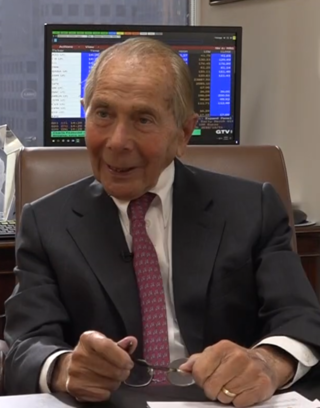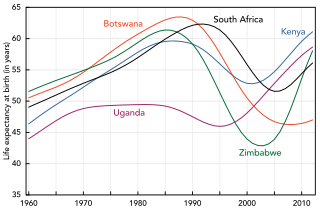
A loyalty program is a marketing strategy designed to encourage customers to continue to shop at or use the services of a business associated with the program. A loyalty program typically involves the operator of a particular program set up an account for a customer of a business associated with the scheme, and then issue to the customer a loyalty card which may be a plastic or paper card, visually similar to a credit card, that identifies the cardholder as a participant in the program. Cards may have a barcode or magstripe to more easily allow for scanning, although some are chip cards or proximity cards.

Ecotourism is a form of tourism marketed as "responsible" travel to natural areas, conserving the environment, and improving the well-being of the local people. The stated purpose may be to educate the traveler, to provide funds for ecological conservation, to directly benefit the economic development and political empowerment of local communities, or to foster respect for different cultures and human rights.

A frequent-flyer programme (FFP) is a loyalty program offered by an airline.

In general, incentives are anything that persuade a person to alter their behavior in the desired manner. It is emphasized that incentives matter by the basic law of economists and the laws of behavior, which state that higher incentives amount to greater levels of effort and therefore higher levels of performance.
Funding is the act of providing resources to finance a need, program, or project. While this is usually in the form of money, it can also take the form of effort or time from an organization or company. Generally, this word is used when a firm uses its internal reserves to satisfy its necessity for cash, while the term financing is used when the firm acquires capital from external sources.

Maurice Raymond “Hank” Greenberg is an American business executive and former chairman and chief executive officer of American International Group (AIG).

The California Public Employees' Retirement System (CalPERS) is an agency in the California executive branch that "manages pension and health benefits for more than 1.5 million California public employees, retirees, and their families". In fiscal year 2020–21, CalPERS paid over $27.4 billion in retirement benefits, and over $9.74 billion in health benefits.
Matching funds are funds that are set to be paid in proportion to funds available from other sources. Matching fund payments usually arise in situations of charity or public good. The terms cost sharing, in-kind, and matching can be used interchangeably but refer to different types of donations.
A tax incentive is an aspect of a government's taxation policy designed to incentivize or encourage a particular economic activity by reducing tax payments.
Workplace wellness, also known as corporate wellbeing outside the United States, is a broad term used to describe activities, programs, and/or organizational policies designed to support healthy behavior in the workplace. This often involves health education, medical screenings, weight management programs, and onsite fitness programs or facilities. It can also include flex-time for exercise, providing onsite kitchen and eating areas, offering healthy food options in vending machines, holding "walk and talk" meetings, and offering financial and other incentives for participation.
Loyalty marketing is a marketing strategy in which a company focuses on growing and retaining existing customers through incentives. Branding, product marketing, and loyalty marketing all form part of the customer proposition – the subjective assessment by the customer of whether to purchase a brand or not based on the integrated combination of the value they receive from each of these marketing disciplines.
An incentive program is a formal scheme used to promote or encourage specific actions or behavior by a specific group of people during a defined period of time. Incentive programs are particularly used in business management to motivate employees and in sales to attract and retain customers. Scientific literature also refers to this concept as pay for performance.
Rural tourism is a tourism that focuses on actively participating in a rural lifestyle. It can be a variant of ecotourism. Many villages can facilitate tourism because many villagers are hospitable and eager to welcome or host visitors. Agriculture has become more mechanized and requires less manual labor. This trend is causing economic pressure on some villages, which in turn causes young people to move to urban areas. There is however, a segment of the urban population that is interested in visiting the rural areas and understanding the lifestyle.

HIV/AIDS affects economic growth by reducing the availability of human capital. Without proper prevention, nutrition, health care and medicine that is available in developing countries, large numbers of people are developing AIDS.
An economic impact analysis (EIA) examines the effect of an event on the economy in a specified area, ranging from a single neighborhood to the entire globe. It usually measures changes in business revenue, business profits, personal wages, and/or jobs. The economic event analyzed can include implementation of a new policy or project, or may simply be the presence of a business or organization. An economic impact analysis is commonly conducted when there is public concern about the potential impacts of a proposed project or policy.
Virtual engagement is a metric to determine the level of affinity between a company and its customers.
Maritz is a sales and marketing services company that designs and operates employee recognition and reward programs, sales channel incentive programs, and customer loyalty programs. It also plans corporate & association trade shows, meetings and events, and offers a customer experience technology platform.

Movie production incentives are tax incentives offered on a state-by-state basis throughout the United States to encourage in-state film production. Since the 1990s, states have offered increasingly competitive incentives to lure productions away from other states. The structure, type, and size of the incentives vary from state to state. Many include tax credits and exemptions, and other incentive packages include cash grants, fee-free locations, or other perks.
Workplace health promotion is the combined efforts of employers, employees, and society to improve the mental and physical health and well-being of people at work. The term workplace health promotion denotes a comprehensive analysis and design of human and organizational work levels with the strategic aim of developing and improving health resources in an enterprise. The World Health Organization has prioritized the workplace as a setting for health promotion because of the large potential audience and influence on all spheres of a person's life. The Luxembourg Declaration provides that health and well-being of employees at work can be achieved through a combination of:
Employee recognition is the timely, informal or formal acknowledgement of a person's behavior, effort, or business result that supports the organization's goals and values, and exceeds their superior's normal expectations. Recognition has been held to be a constructive response and a judgment made about a person's contribution, reflecting not just work performance but also personal dedication and engagement on a regular or ad hoc basis, and expressed formally or informally, individually or collectively, privately or publicly, and monetarily or non-monetarily.







